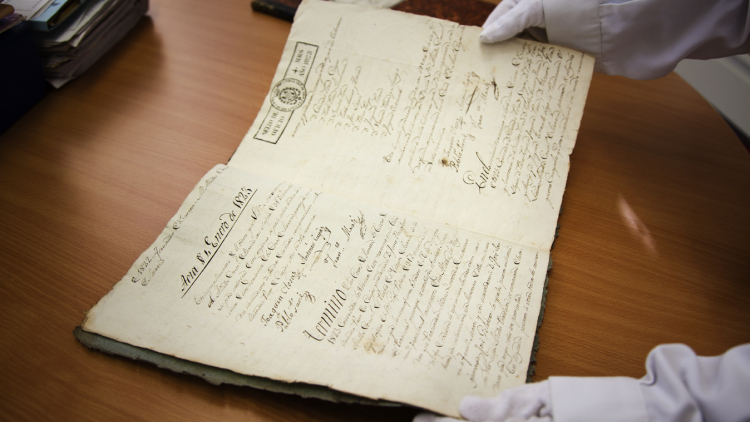What records do we keep?
Municipal fonds
We keep the municipal records produced or received by local government bodies and municipal authority offices, past and present, within their geographic area.
- The fonds of the old municipality of Les Corts, from 1823 to 1897.
- Barcelona City Council fonds from 1954 to the present, although most of the records date from 1984.
We have 57 boxes of records from the old Les Corts municipality. Even though the fonds began in 1823, most of the records are from 1857 to 1897. These documents enable us to discover the political events and lives of the inhabitants of one of the oldest towns on the Barcelona Plain.
The Barcelona City Council fonds consists of documents produced following the annexation of the towns and villages on the plain, the oldest being those of the Les Corts District Council from 1954 to 1983 but they are of nominal value because the 'Junta', as it was called, had few functions.
The largest number of documents date from 1984, following the new territorial division of Barcelona into ten districts, the definition of District Municipal Council powers and the subsequent political and administrative activity of the municipal offices. The series most consulted by members of the public include business activity licences, licences for major and minor works, and urban development projects.
Private fonds
These include all the documents that come from transfers or donations by individuals and private organisations. The most important include those of Cristalleries Planell, an old blown-glass factory, the Orfeó de les Corts choral society and the Institut Frenopàtic Tomàs Dolsa.
The Cristalleries Planell fonds, which documents one of the main industries established in Les Corts, covers the period from 1914 to 1949 and also includes an interesting selection of photographs. It is a good source for explaining the economic and social structure of Les Corts, its urban context, manufacturing processes and techniques, foresight in marketing channels, and the individual and collective enterprising challenge of a whole town.
The fonds of the Orfeó de les Corts, founded in 1958 on the initiative of a group of neighbourhood residents, stretches from 1958 to 2004 and stems from its activities and the running of the society. It contains textual and graphic material and audiovisual recordings of the society’s musical performances and activities.
When the Institut Frenopàtic Tomàs Dolsa closed after 140 years in 2000, its fonds was handed over to the Les Corts Archives, providing 60 linear metres of historical records including textual documents, plans, engraving plates and photo albums.
Collections
Besides the collection of 16,000 photographs running from 1890 to 2015, we have other, private collections from 1890 to 1974, such as the Morales i Batlle Family collection. He was the mayor of the Les Corts when it was an independent municipality.
One collection we highlight is the Archives postcards collection from 1890 to 2010, especially the Torre Melina zoo postcards from the early 20th century.
We also have an auxiliary library, as well as magazines and periodicals produced in Les Corts which, in many cases, have come from residents’ associations and other entities.
If you want to find out all the information we have at the Les Corts Archives, consult the fonds table.

